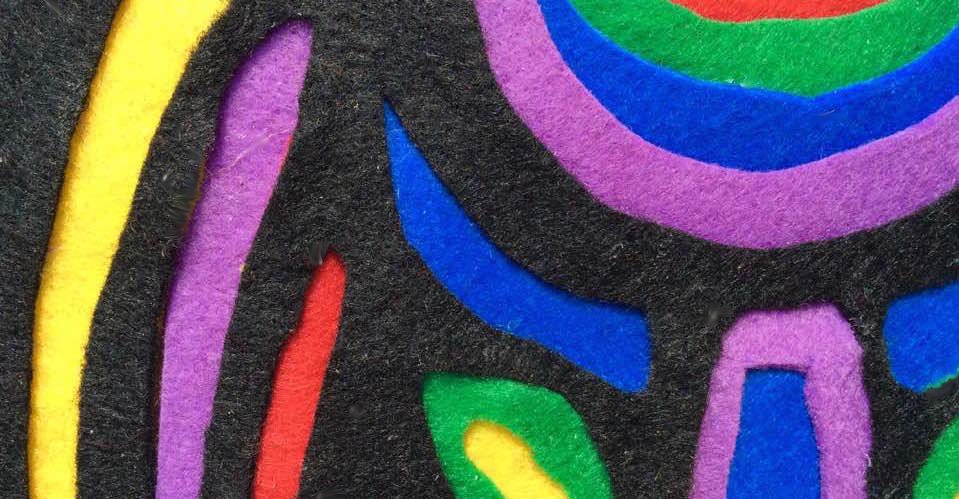
Part of the beauty of learning something historic, cultural, or artistic from another part of the world is it allows those unable to physically travel to experience other parts of the globe.
This includes folk art, a style of that is created not by world-famous artists whose names we may remember but by those, according to the American Folk Art Museum, whose “singular talents have been refined through experience rather than formal artistic training.”
This type of art, often created by anonymous artists or craftspersons, encompasses both American and world artists, and it covers works of all medium.
The British Dictionary definition of folk art as art that is “originating from, or traditional to, the common people of a country.”
However, these works are by no means common. Instead, folk art shows how imagination, the use of tools and materials readily available, and passing down artistic skills through generations, reveals that the love of art is something every county, culture, and region around the world shares.
This summer’s first folk art-based Be the Artist, travels to the Central American nation of Panama for the art form of painting with fabric: Molas.

“Mola” means “cloth” or “clothes” in Dulegaya, the language of the Panama’s Kuna culture.
These colorful, multi-layered panels of material are created primarily by the women of the San Blas Islands off the Atlantic coast of Panama. They often make up the design on traditional clothing of the region but are also created as stand-alone works and sold to tourists and collectors.
Some of the original inspiration for Mola designs comes from more geometric patterns similar to those used on body painting, but now designs have evolved to cover everything from abstracts, plants and animals, and even pop culture symbols. In addition to still being used for clothing decoration, the Molas are a popular item for visitors. A 2012 exhibit on Molas from the Los Angeles County Museum of Art referred to pieces inspired by Batman and Felix the Cat.
The more colorful and layered the mola, the higher quality they are considered. Some more elaborate designs can take weeks or months to finish.
Some molas that have been worn on blouses or dresses may even be cut out and sold to visitors after the clothes have worn out. That’s a great lesson in upcycling for all of us.
The Project: Felted Molas

The traditional Mola is actually created in a sort of reverse appliqué technique, in which two or more layers of cloth or sewn together, and the design is cut out layer by layer from the top piece down.
For this mola-inspired project, you’ll need only felt, good craft glue, and scissors, similar to Henri Matisse project of painting with scissors.

First, decide the colors and number of layers desired, and draw a simple design on the back of the piece chosen to be on top. This top layer will be the piece with the biggest cutout area, so make sure to start with a simple design.
A symmetrical design that can be same on both sides (like a shield, star, heart, or bat) is a good place to start, but it doesn’t have to be. Pumpkin stencils are some also good inspirations for patterns.
Using sharp scissors, cut out the pattern or design. Cut slowly and steadily, and be careful not to cut pieces out unintentionally.
Next, glue this top piece on the second layer, and cut around, the inside edges seen through the top layer, leaving an even amount around the edge (as pictured).
Glue a third layer for the bottom piece, or cut this layer in the same method of the second piece, if desired, and add a fourth. Don’t try too many layers to start.

You don’t have to use an entire sheet of felt for a second or third layer, if only a small part of is it is going to feature a certain color; this will save felt.
As an easy variant for younger and beginning crafters, use construction paper instead of felt. It is easier to draw on and cut.
These can be hung on a wall as-is or sewn onto a piece of material (for decorating purposes–don’t wash them).
The Kuna tribe has fun with their Molas. They love the color, detail, and energy from them. Do the same with yours; have fun.
Author Michel Perrin called Panama’s Atlantic coast a place “where skilled scissor-users lived…” in his book Magnificent Molas: The Art of the Kuna Indians. Try out your own “scissors skills” this summer in celebration of the Kunas’ vibrant textile art.

GeekMom Lisa Tate’s Be the Artist summer family art series for 2017 focuses on artists and folk art styles from around the world.



